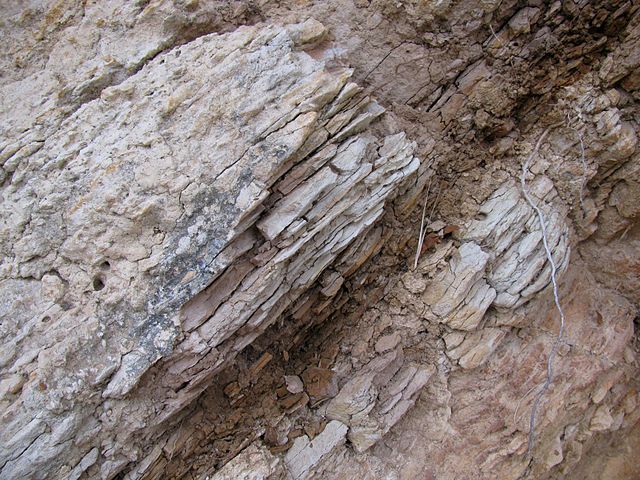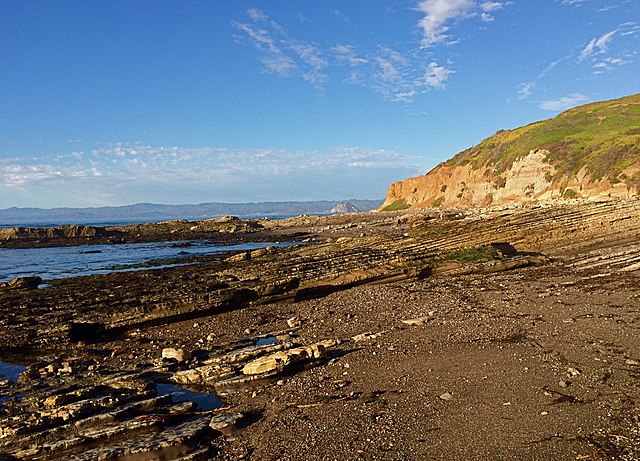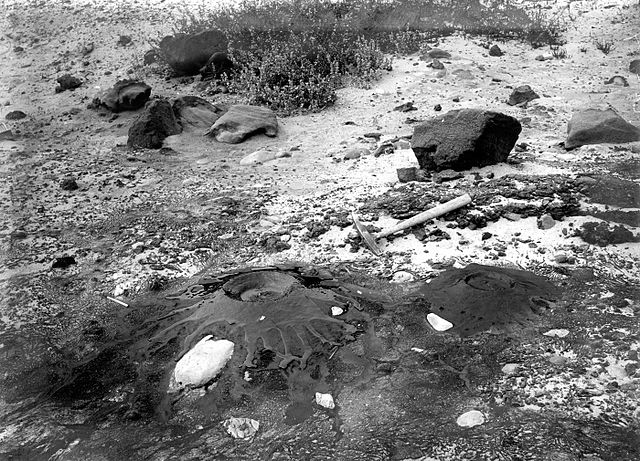The Monterey Formation is an extensive Miocene oil-rich geological sedimentary formation in California, with outcrops of the formation in parts of the California Coast Ranges, Peninsular Ranges, and on some of California's off-shore islands. The type locality is near the city of Monterey, California.
The Monterey Formation is the major source-rock for 37 to 38 billion barrels of oil in conventional traps such as sandstones. This is most of California's known oil resources. The Monterey has been extensively investigated and mapped for petroleum potential, and is of major importance for understanding the complex geological history of California. Its rocks are mostly highly siliceous strata that vary greatly in composition, stratigraphy, and tectono-stratigraphic history.
Outcrop of Monterey Formation, Gaviota State Park, California
Upper Miocene Migeulito member exposed at Hazard Reef, Montana de Oro State Park. This is the first onshore outcrop of the Monterey Formation south of the Monterey Peninsula. Large exposures continue south along the coast, often associated with important oilfields.
Tar "volcano" in the old Carpinteria Asphalt mine. Heavy oil exudes from joint cracks in the upturned Monterey shale forming the floor of mine. 1906 photo, U.S. Geological Survey Bulletin 321
Fold in Monterey Formation
Chert is a hard, fine-grained sedimentary rock composed of microcrystalline or cryptocrystalline quartz, the mineral form of silicon dioxide (SiO2). Chert is characteristically of biological origin, but may also occur inorganically as a chemical precipitate or a diagenetic replacement, as in petrified wood.
A hand sample of chert
Chert (dark bands) in the Devonian Corriganville-New Creek limestone, Everett, Pennsylvania
Folded beds of chert comprising the Late Permian to Jurassic-aged Liminangcong Formation at Busuanga, Palawan, Philippines
Chert nodule within soft limestone at Akçakoca, Turkey








